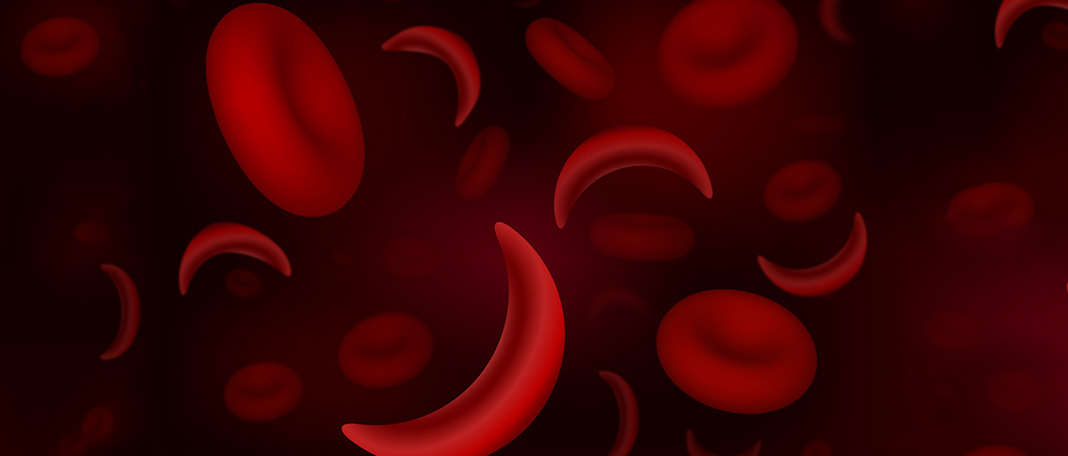Sickle cell disease (SCD) refers to a form of inherited red blood cell disorder. The red blood cells consist of hemoglobin, a protein that carries oxygen to the tissues of the body. Healthy red blood cells are glossy, disk-shaped, and flexible.
Haemoglobin would be abnormal in persons with SCD, which causes the red blood cells to harden and stick together in the shape of a crescent or C.
a tool called a sickle. These sticky cells can’t easily move through the blood vessels. If they pass through the small blood vessels, they get stuck and block the blood flow. This may lead to serious complications such as infections, stroke, and acute chest syndrome.
A typical blood cell can survive up to 120 days whereas the sickle blood cells live only for 10 to 20 days.
What Causes Sickle Cell Anemia?
Sickle cell is a hereditary disease caused by gene deficiency.
An individual will be born with sickle cell disease only if they inherit two genes—one from the mother and another from the father.
People who inherit the transmuted hemoglobin gene from both biological parents have sickle cell anemia. People who inherit the transmuted gene from one parent have the sickle cell trait.
What Raises One’s Risk for Sickle Cell Disease?
Having a bloodline of sickle cell disease will increase the risk factors.
What Are the Symptoms of Sickle Cell Disease?
The symptoms of sickle cell anemia start when the babies are around 5 to 6 months old. The risk of developing new medical conditions is high when they grow older. You must consult a specialist when you notice the first signs or symptoms of this disease. The symptoms of sickle cell disease are given below.
However, the symptoms may vary for each person differently.
Anemia: Since the sickle cell is short-lived, there are fewer red blood cells available in the body and this leads to anemia.
Pain Crisis: It happens when the blood flow is blocked in an area because the sickle cells are stuck in the blood vessels. The pain can arise anywhere, but mostly it occurs in the chest, arms, and legs.
Acute Chest Syndrome: It occurs when sickling occurs in the chest. It happens suddenly when the body is under infection, fever, and dehydration. When the sickled cells stick together and it blocks the tiny vessels in the lungs.
Stroke: This is another severe complication of people with Sickle disease. In case any interruption occurs in the flow of blood and oxygen to the brain, it results in brain damage.
Jaundice or Yellowing of the Skin, Eyes, and Mouth: A common sign of sickle cell disease is jaundice.
How Is Sickle Cell Anemia Diagnosed?
Hemoglobin electrophoresis is a blood test that can identify sickle cell disease or any disease associated with the sickle cell gene.
How is Sickle Cell Anemia Treated?
The health professional will consider age, overall health, and other factors when determining the best treatment for SCD patients. Treatment is intended to prevent organ damage and infections.
Pain Medications: In the event of crises related to sickle cell disease.
Consuming Plenty of Water: Drinking 8 to 10 glasses of water may prevent and treat pain crises. In some circumstances, intravenous fluid may be necessary.
Blood Transfusions: This may lessen the risk of stroke and help treat anemia. It is used to dilute sickle hemoglobin with normal hemoglobin to treat chronic pain and other associated diseases
Vaccines and Antibiotics: Used to prevent infections.
Folic Acid: Helps prevent severe anemia.
General Prevention Strategies
Sickle cell disease management is focused on preventing and treating pain occurrence and other complications. Since it is a genetically inhabiting disease, it is not contagious.
Incorporating certain strategies in lifestyle and medical screening and interventions will help prevent SCD complications.














